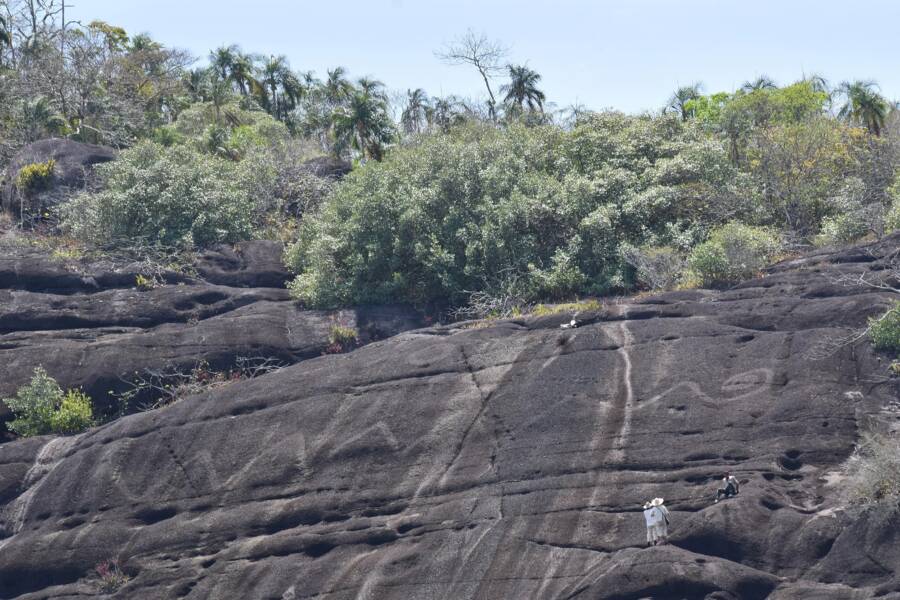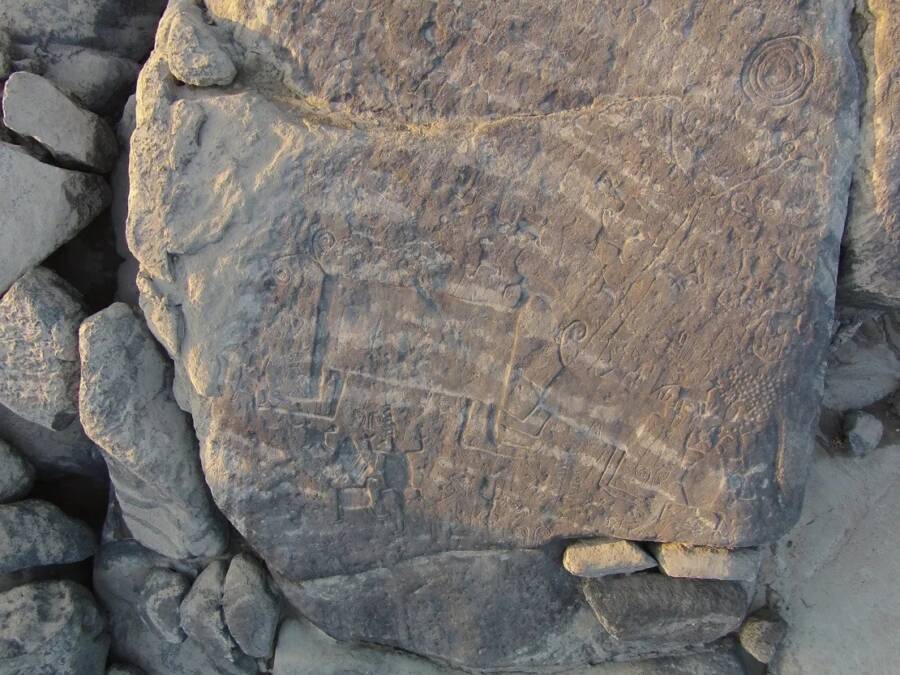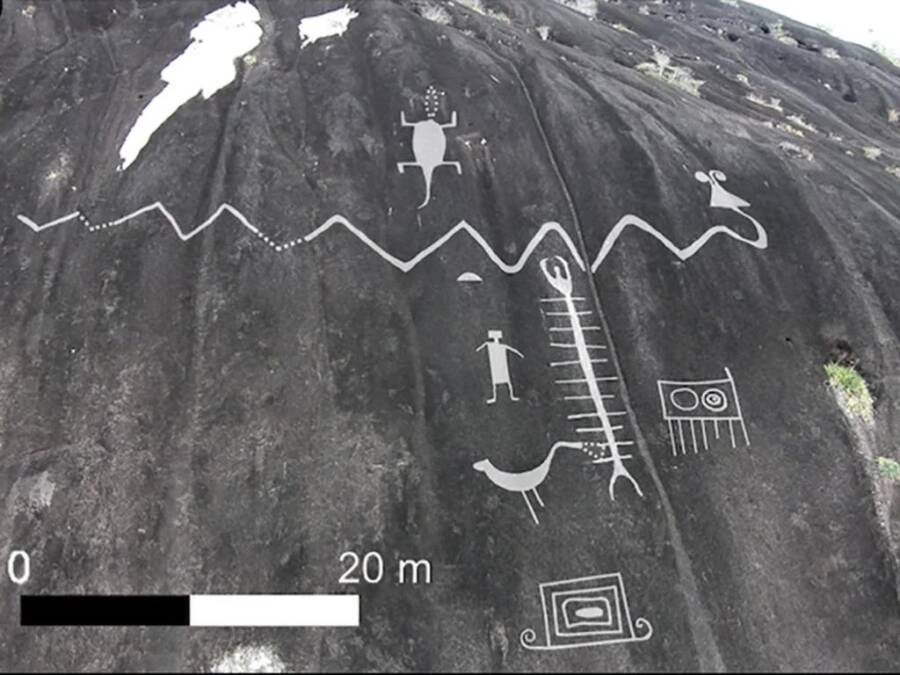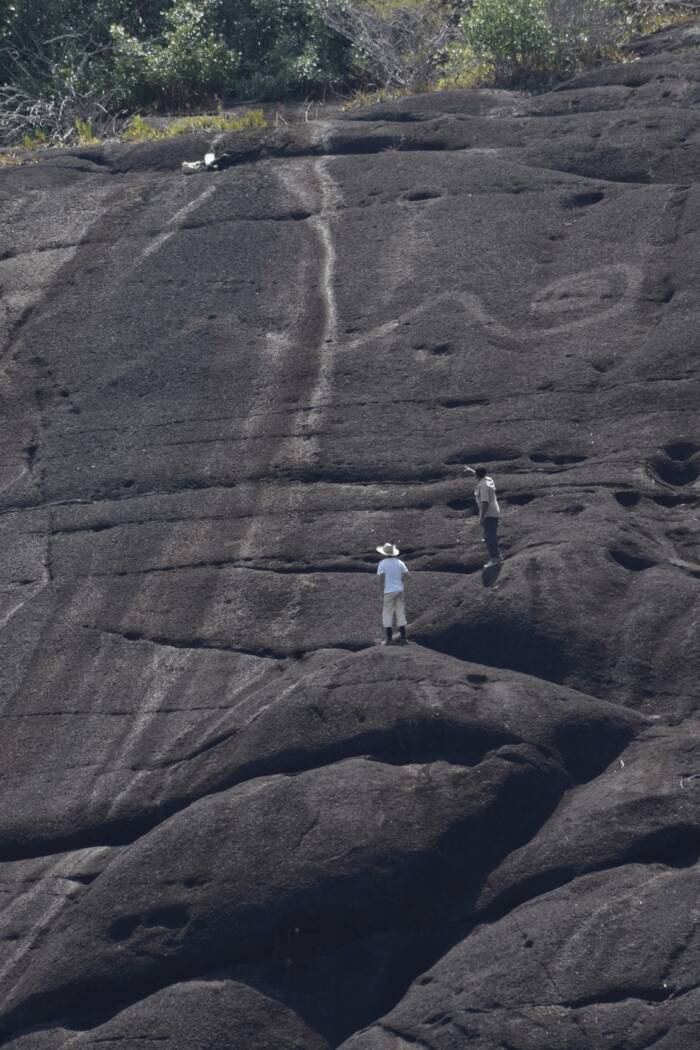Carved between 1,000 and 2,000 years ago, these enormous engravings are located along the Orinoco River in Colombia and Venezuela.

Dr. José OliverEnormous snakes like this one are among the most common motifs in this rock art.
Thousands of years ago, it would have been a startling sight: miles and miles of sheer rock, rising up from the river, covered in carvings of animals like anacondas, rodents, and giant centipedes. As the centuries passed, however, the carvings were largely lost to time. Until now.
A new study has documented, for the first time, the ancient rock carvings along the Orinoco River in Colombia and Venezuela. In all, the rock carvings stretch across 60 miles and include more than 150 individual engravings, and one site in particular may contain the largest piece of rock art ever recorded.
Uncovering Miles Of Ancient Rock Carvings Along The Orinoco River

Dr. Philip RirisA closer look at some of the rock engravings, which depict images including animals, humans, and geometric shapes.
According to a study in Antiquity, researchers identified 157 rock art locations along the Orinoco River. Of these, 13 were classified as “monumental,” which researchers defined as “prominently located in the landscape and at least twice as large as an adult human.”
The images, made by scraping away the dark bacteria on the surface, depict a number of different motifs. As the study notes, they include geometric shapes, human figures, mammals, arthropods that are likely depictions of giant Amazonian centipedes, and different snakes like boas and anacondas.
“Gigantic snakes are the most widespread monumental motif, occurring at most monumental sites, and show consistent iconographic patterns in their depiction and composition,” the study notes. “In terms of iconographic convention, engravings of snakes are typically tens of meters [32 feet] long.”
Of these, one rock carving looms above the rest — literally. At a site called Cerro Pintado in Venezuela, the researchers documented a snake carving that stretches 131 feet long. This appears to be the largest rock carving ever documented anywhere in the world.

Dr. Philip RirisAn enhanced view of how the rock art in Cerro Pintado would have looked when it was freshly carved between 1,000 and 2,000 years ago.
Though rock carvings are difficult to accurately date, researchers believe that the carvings along the Orinoco River are between 1,000 and 2,000 years old because of similar motifs recorded on ancient pottery.
So what exactly did these stunning carvings mean to the people who carved them? And what did they mean to the people navigating the river who laid eyes on them?
The Meaning Behind These Monumental Carvings
According to lead author Philip Riris, a senior lecturer in archaeological environmental modeling at Bournemouth University, the rock carvings along the Orinoco River were probably used as territorial markers.
However, the meaning of the images is unclear, just as it is with the famous engravings in neighboring Peru known as the Nazca Lines. The snakes could have been a warning sign to outsiders, or a way of identifying who lived there.

Philip RirisAn enormous rock carving along the Orinoco River that shows the tail of a snake.
“There are two sides to these being territorial markers,” Riris explained to CNN. “One could be a warning sign — you’re in our backyard, you better behave yourself. The other could be a marker of identity — you’re in our backyard, you’re among friends. But I don’t think they had a single purpose, so they could easily be both.”
In local mythology, he explained, snakes are both “creators” and “protectors.” While ancient people believed that snakes created rivers as they traveled, they also recognized snakes as dangerous creatures that demanded respect. Thus, they could have multiple meanings as rock carvings.

Dr. Philip RirisA depiction of a mythical snake in the Orinoco River. In local mythology, snakes were both creators and predators.
In the end, questions remain about the collection of rock art sites identified by the study. Though the answers may have been lost to time, the carvings remain just as astounding today as they were thousands of years ago.
After reading about the Orinoco River rock carvings, some of which may be the largest in the world, discover the story of Titanoboa, the prehistoric 50-foot snake that once slithered through the Colombian jungle. Then, discover the chilling story of Snake Island, the snake-infested island near Brazil.





